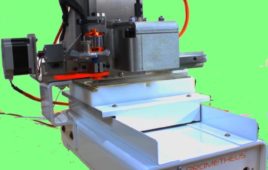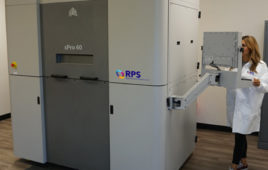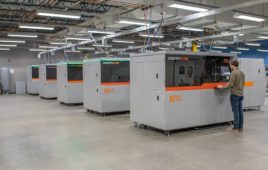Depending on the particular research paper, the human male contains four to five liters of blood in his body. This volume fluctuates with the size of the vessel, so children and women typically have less (an average of 4.7 liters).
Among the many unforeseen circumstances that can cause dramatic blood loss in an individual, each of which may cause severe complications, the large and rapid loss of blood that occurs during surgery is one of the most likely to cause severe complications or even death.
At the moment, the nation is facing a critical shortage of blood (one of the worst that the Red Cross has ever seen) that has resulted from lower donations than previous years and an increased demand due to a rising number of complex therapies that require significant amounts of blood, such as chemotherapy, organ transplants, and heart surgeries. As of September 2012, the Red Cross required 80,000 units of blood (a unit averages 450 mL) each day, but lately the institution has had a mere 36,000 units on hand.
The shortages have already caused the cancellations of elective surgeries in highly populated cities, and the issue shows no signs of slowing — the demand for blood increased six percent annually while blood donations have only increased three percent.
Such shortages have spurred innovations in autotransfusion, the process wherein a person receives his/her own blood for transfusion instead of banked donor blood. Typically, the blood can be harvested from the individual before a surgical procedure, but a new device makes it easier to collect blood lost during surgery and return it to the patient.
Autotransfusion isn’t new (the first documented procedure dates back to 1818), and, until now, the most common device used to return blood lost during surgery was known as the Cell Saver, a system intended for use in surgeries in which medium- to high-volume blood loss occurs, such as trauma cases. According to Haemonetics, a medical device company that focuses on blood processing systems, the Cell Saver System “delivers moderate hematocrit [the volume percentage of red blood cells in blood] and helps to remove traces of undesirable components, such as free hemoglobin [the hemoglobin outside of the red blood cells].”
Enter the University of Strathclyde, Glasgow and a pioneering surgical blood salvage technology that is likely to transform the way major surgery is carried out by reducing blood loss in patients.
Unlike the cumbersome Cell Saver, the university’s device, HemoSep, is a smaller system that is looking to revolutionize the health care sector after acquiring the CE mark and receiving Canadian national approval in August 2012. The new device received the mark following highly successful clinical trials at the University of Kirikkale University Hospital in Ankara, Turkey.
The device, much like its predecessor, is designed to recover blood spilled during open-heart and major trauma surgery, and concentrate the blood cells for transfusion back to the patient. The product development was led by Professor Terry Gourlay in the University’s Department of Biomedical Engineering as part of a collaboration with the medical device industry that has taken HemoSep from concept to clinical delivery.
According to Gourlay, the introduction of HemoSep to the medical device field “will make a significant difference to people’s lives, and greatly reduce the cost and risks associated with blood transfusions. The technology has distinct advantages over traditional techniques which are not only costly, but technically challenging and involve the use of a complex centrifuge pumping apparatus by specialist technicians.”
HemoSep consists of a blood bag that uses a chemical sponge technology and a mechanical agitator to concentrate blood sucked from the surgical site or drained from the heart-lung machine after the surgery. The separated cells are then returned to the patient via intravenous transfusion.
“We expect further developments in the form of a derivative of this technology for use in children undergoing open-heart surgery where the challenges of blood conservation are even more critical,” says Gourlay.
Clinical trials were carried out in more than 100 open-heart surgery operations during which HemoSep significantly reduced the need for blood transfusions, preserved normal clotting mechanisms, and reduced the inflammatory reaction often encountered after such surgical procedures.
“The technology is a real step forward in the field of autotransfusion for cardiac surgery, being highly effective, easy to use, and associated with a reduction in the need for donor transfusion and blood loss in these patients,” says Professor Serdar Gunaydin, head of cardiac surgery at the University of Kirikkale in Turkey — the site of the clinical trials.
According to Gunaydin, the HemoSep technology was not only impressive, but it was the easiest method the university had ever used.
“There is no interference with the ongoing operation,” says Gunaydin, “and [the] product is ready to use following a very short processing time. It quickly and safely recovers substantial proteins, clotting factors, and cell concentrates for all types of cardiac procedures.”
The next step for HemoSep? Further clinical trials, but the new CE mark means that the device will now be sold throughout the healthcare sector. The product was recently licensed to Advancis Surgical Ltd. and the company will market and sell the device in all European territories, Canada, and other regions which recognize the CE mark.
The new system could realize a significant cost savings in some markets where a unit of blood can cost as much as $1,600 per unit. At that price, particularly in North American markets, the cost makes you think twice about the cookie and juice you’re awarded after each donation. Oh well, saving three lives with each donation is enough of a reward for the average blood donor.
To schedule a blood donation, visit http://www.redcrossblood.org/make-donation or call 1-800-RED-CROSS
(1-800-733-2761).
Filed Under: Rapid prototyping




